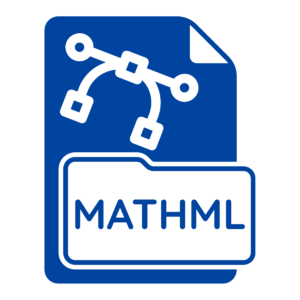MathML what has changed and why it matters?
 In January the Chrome web browser was upgraded to support MathML, a specification for describing mathematical notation. Microsoft’s Edge browser is also built using the same Chrome technology, so it has also received the MathML upgrade. And the components that EPUB reading apps rely on are also being upgraded. This will have positive benefits for accessibility.
In January the Chrome web browser was upgraded to support MathML, a specification for describing mathematical notation. Microsoft’s Edge browser is also built using the same Chrome technology, so it has also received the MathML upgrade. And the components that EPUB reading apps rely on are also being upgraded. This will have positive benefits for accessibility.
Whilst MathML has long been supported by Safari and Firefox, it has been missing from Chrome for around ten years. This meant that if websites wanted to include MathML, they needed to use the MathJax library so that mathematic expressions are displayed correctly. MathJax is very powerful and includes special accessibility features, but the additional requirement of making this library available meant that some websites would take the approach of just using images of math expressions instead.
When it comes to ebooks not all reading apps app included MathJax either, so publishers would also revert to math as images rather than MathML. We know that text as an image isn’t great for accessibility; the same is true for mathematical expressions.
Whilst math images can have alt text, there are several accessibility advantages to using MathML. For people that rely on visual adjustments, MathML expressions can be zoomed without them becoming fuzzy, and when a user chooses a color theme this will apply to the math as well. A screen reader user can listen to the math, and navigate the expression also, essential in anything other than the simplest expressions. With tools such as MathCAT (used with NVDA) the user can choose how the math is announced, choose to have math spoken slower than the regular text, and adjust the braille notation in use.
Now that MathML is natively supported in Safari, Firefox, Chrome, and Edge, websites and publishers can confidently use MathML for math expressions, with the benefits this brings for accessibility.

